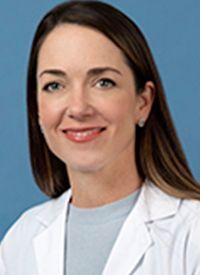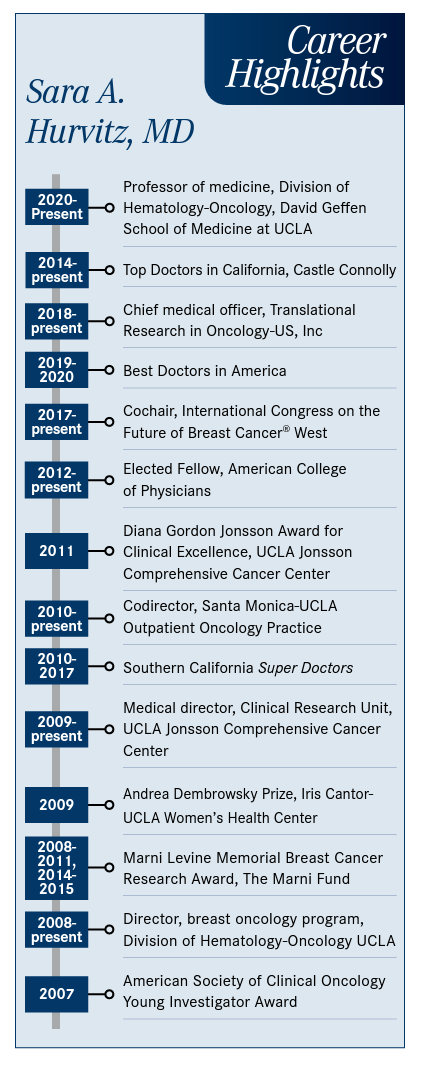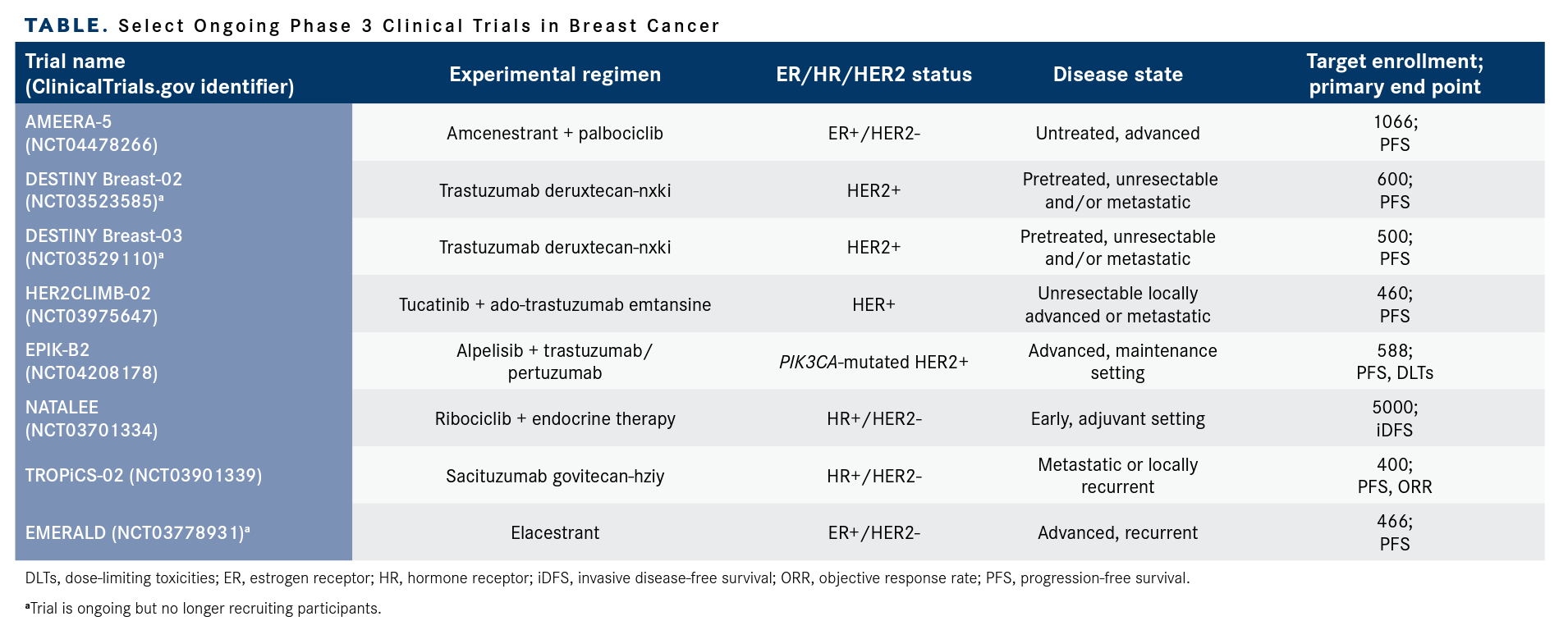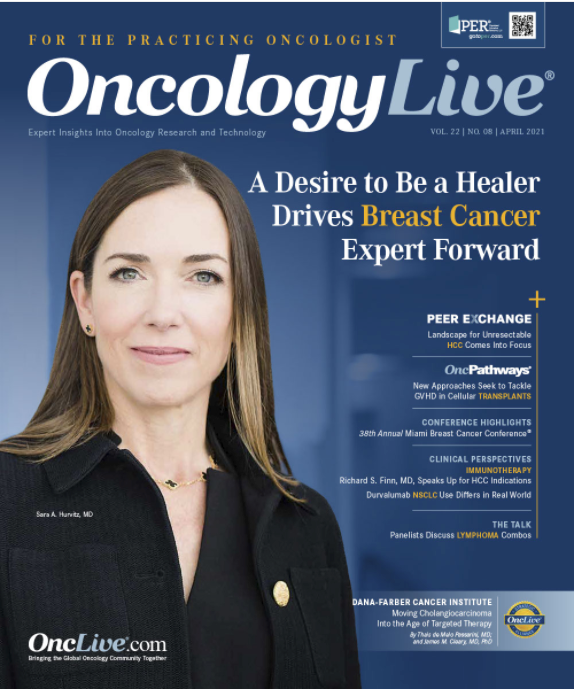Publication
Article
Oncology Live®
A Desire to Be a Healer Drives Breast Cancer Expert Forward
Author(s):
Sara A. Hurvitz, MD, can remember the exact moment she decided to become an oncologist. It was her first day at the University of Southern California School of Medicine, which she had entered in 1995 without a firm idea of what discipline she wanted to pursue.
Sara A. Hurvitz, MD

Sara A. Hurvitz, MD, can remember the exact moment she decided to become an oncologist.
It was her first day at the University of Southern California (USC) School of Medicine, which she had entered in 1995 without a firm idea of what discipline she wanted to pursue. Alexandra Levine, MD, a pioneering investigator into lymphomas and AIDS-related malignancies who was then chief of hematology at USC, addressed the future physicians. Being an oncologist, Levine told them, meant being invited into a sacred relationship with patients. Oncology was a vocation, not a career, she said.
“She gave this lecture talking about the patient-doctor relationship as being one of the most intimate, protected relationships you’re being invited into,” Hurvitz recalled in a recent interview with OncologyLive®.
“The beauty of it just brought tears to my eyes. She talked about treating patients with cancer. And I [thought], ‘I want to be here. This is why I’m doing this. This is what I want to do—be a healer, not a doctor. I’m not here to make money and be famous and all of these things. I want that real relationship with another human being and be able to give something.’ It was pretty powerful.”
Today, Hurvitz is in a position to improve outcomes not only for the patients whose lives she touches personally but also for countless women with breast cancer. She is a professor at David Geffen School of Medicine at UCLA; medical director of the Jonsson Comprehensive Cancer Center Clinical Research Unit; and codirector of the Santa Monica-UCLA Outpatient Oncology Practices. In addition, as director of the Breast Cancer Clinical Trials Program at UCLA, Hurvitz helps oversee a robust menu of experimental studies across the spectrum of the malignancy.
Hurvitz’s decision to specialize in breast cancer was shaped by some of the most brilliant minds in the field. She had planned to work in lymphoma like her hero Levine. Then Dennis J. Slamon, MD, PhD, the 2014 Giants of Cancer Care® award winner in breast cancer whose research led to the discovery of trastuzumab (Herceptin), intervened. Slamon recruited Hurvitz to join his breast cancer research team at UCLA. He claimed that breast cancer was much simpler and easier to treat than lymphoma.
Hurvitz was nearly finished with her fellowship in hematology and oncology at UCLA and wasn’t interested in a change of direction. She was pregnant with her second child at the time and her husband was doing a second residency, going from otolaryngology to reconstructive surgery.
Slamon told her to “go home, have your baby, and when you’re on maternity leave, do a little reading about breast cancer. There are only a couple types of breast cancer. It’s really easy.”
She went home and wrote a 30-page summary of the history of breast cancer chemotherapy that covered the groundbreaking work of Bernard Fisher, MD, a 2013 Giants of Cancer Care® award winner in breast cancer, in the late 1950s through the cuttingedge treatments of 2005. She eventually signed on to Slamon’s plan and he became her mentor. But breast cancer wasn’t nearly as straightforward as he had made it out to be. “He wasn’t entirely truthful,” she said with a laugh.
Insights From the Front Lines
On July 30 and 31, Hurvitz will join other leading breast cancer experts in discussing best practices and emerging treatment approaches during the 20th Annual International Congress on the Future of Breast Cancer® West. Physicians’ Education Resource®, LLC (PER®) is sponsoring the conference in San Diego, California.
Hurvitz is cochairing the conference along with Joyce A. O’Shaughnessy, MD, the Celebrating Women Chair in Breast Cancer Research at Baylor University Medical Center and director, Breast Cancer Research Program, Texas Oncology, US Oncology, Dallas, Texas. O’Shaughnessy also is a 2016 Giants of Cancer Care® award winner in the community outreach/education category. She is the program chair for an East Coast version of the meeting, the 20th Annual International Congress on the Future of Breast Cancer® East, which will be held July 16 and 17 in New York, New York.
The program for the West conference covers a broad range of data from preclinical breakthroughs to changes in treatment paradigms, information on novel agents and improved regimens, and insights into practical application of the latest trial findings in patient care.
Hurvitz said the timing of the conference provides an ideal opportunity for catching up on the latest data presented at a number of other events. These include the San Antonio Breast Cancer Symposium in December 2020, and the Miami Breast Cancer Conference® in March, the European Society for Medical Oncology (ESMO) Breast Cancer Virtual Congress in May, and the American Society of Clinical Oncology (ASCO) Annual Meeting in June.
“Clinicians [will be] able, over the course of 2 days, to really get an in-depth summary on the hottest topics that came out of those conferences with a great faculty. It’s not just the medical oncology side of things, but we have surgery topics that are addressed, as well as radiation oncology,” she said. “It’s a fantastic way for clinicians to get up to date on the newest data...from clinically relevant topics for us to be translating into the clinic immediately to the most exciting stuff coming out of the laboratories and about to be translated into the clinic.”
The faculty, which features Giants of Cancer Care® award winners Hope S. Rugo, MD, FASCO, and George W. Sledge Jr, MD, as well as Debu Tripathy, MD; Monica Morrow, MD; and Wendy A. Woodward, MD, PhD, will provide their perspectives on individualizing therapy. The program also includes debates exploring current controversies in the field along with case discussions.
Hurvitz said O’Shaughnessy will deliver a presentation reviewing the potential for neoadjuvant CDK4/6 inhibitors. Other hot topics cover integrating and sequencing options for HER2-positive breast cancer, including patients with brain metastases; employing emerging approaches for triple-negative breast cancer (TNBC) such as PARP inhibitors, antibody-drug conjugates (ADCs), and immunotherapy; and individualizing biomarkers and gene expression assays to personalize therapy. Hurvitz noted that she and O’Shaughnessy make a point to include topics of interest to radiation and surgical oncologists in the program.
“From a radiation perspective, we’re going to be talking about things like [whether we can] omit radiation for some patients who’ve had breast conserving surgery,” Hurvitz said. “We’ll be going through novel cytotoxics, the newest data relating to immune checkpoint inhibitors, novel therapies in the HER2-positive realm, and how to sort through and sequence all of these agents we now have at our disposal. There will be a variety of surgical topics that I think will be exciting as well.”
At present, Future of Breast Cancer® West is slated to be a hybrid meeting with in- person as well as virtual sessions. As more and more people receive a coronavirus disease 2019 vaccine and the pandemic eases, Hurvitz hopes that medical conferences can regain their footing as live events.
“It’s fairly impressive how the world changed so quickly over the course of a year to be able to conduct and attend some of these very large, important data-gathering meetings from home,” she said. Hurvitz noted that attendance was up at the Miami Breast Cancer Conference®, where she delivered a presentation on novel therapies for HER2-positive metastatic breast cancer and took part in a roundtable discussion on genomic profiling in estrogen receptor (ER)-positive disease, in part because physicians who otherwise might not have traveled to Miami could attend virtually.
“I hope that we’ll at least have a part in person conference in July. San Diego is a great place to visit,” she said. “But it will be nice to include those people who aren’t able to attend in-person by having a virtual component as well. The more inclusive we can be now, the better we’re going to do in terms of attendance and interaction and networking.”
Sara A. Hurvitz career highlights

Finding Success an an Outsider
Hurvitz comes from a family of artists, not physicians, and jokes that her career as a scientist has made her the black sheep. She acknowledges that she often felt out of place in pursuing medicine as a career because she didn’t come from a scientific background like so many of her classmates and colleagues. However, that same self-doubt drove her to become a more effective investigator and doctor.
“The imposter syndrome that I have carried with me since I decided I wanted to be a doctor has helped me connect better with people,” she said. “I overstudy things—I never would have expected to be an expert in breast cancer. It’s probably that level of anxiety and feeling that I don’t belong here that has caused me to overachieve at some level, to study a little bit more than maybe people who assumed this was in their blood [might have done].”
Hurvitz has gone on to build a strong research resume during her career. In 2007, she won a Young Investigator Award from the ASCO Foundation, which helps support promising work in a range of cancers.
One of the first investigator-initiated studies she developed and led was the phase 2 TRIO-US B07 trial (NCT00769470) evaluating trastuzumab vs lapatinib (Tykerb) vs a combination of both in patients with early-stage HER2-positive breast cancer. Patients were randomly assigned to trastuzumab (n = 34), lapatinib (n = 36), or both (n = 58).
Each patient received 1 cycle of the designated anti-HER2 therapy alone followed by 6 cycles of standard combination chemotherapy with the same anti-HER2 therapy. The primary objective was to estimate the rate of pathologic complete response (pCR) at the time of surgery in each of the 3 arms.
In the intent-to-treat population, pCR rates were similar between the trastuzumab (47%; 95% CI, 30%-65%) and combination groups (52%; 95% CI, 38%-65%). The rate was lower in the lapatinib group (25%; 95% CI, 13%-43%). Investigators found that HER2 amplification and hormone receptor– negative status were associated with a higher pCR rate.1
Hurvitz was also a coauthor on the phase 3 EMBRACA trial (NCT01945775). Findings from that study led to the FDA approval in October 2018 for the PARP inhibitor talazoparib (Talzenna), for patients with deleterious or suspected deleterious germline BRCA-mutated (gBRCAm), HER2-negative locally advanced or metastatic breast cancer.2
Patients in the trial were assigned to 1 mg of talazoparib or physician’s choice of single-agent chemotherapy comprising capecitabine (Xeloda), eribulin (Halaven), gemcitabine, or vinorelbine. Eligible patients were allowed no more than 3 prior cytotoxic chemotherapy regimens for locally advanced or metastatic disease and were required to have received treatment with an anthracycline and/or a taxane in the neoadjuvant, adjuvant, and/or metastatic treatment setting.
At a median follow-up of 11.2 months, the median progression-free survival (PFS) was 8.6 months in the talazoparib arm vs 5.6 months in the chemotherapy arms (HR, 0.54; 95% CI, 0.41-0.71; P < .0001). The investigator-assessed objective response rate (ORR) was 62.6% vs 27.2% in favor of talazoparib (odds ratio, 5.0; 95% CI, 2.9-8.8; P < .001). The PFS benefit with talazoparib was observed across all subgroups.3
Targets Beyond HER2
Novel therapeutic approaches have resulted in improvements in survival for patients with metastatic HER2-positive breast cancer over the past decade, Hurvitz noted during her presentation at the Miami Breast Cancer Conference®. There are now 8 HER2targeting agents available for patients with metastatic breast cancer, Hurvitz said; these include 4 new drugs that the FDA approved in the past 16 months.4 Additional regimens also are in development that may further change the paradigm.
Meanwhile, a number of agents are being tested in phase 1 through 3 studies focusing on other forms of the disease. She cited several phase 3 trials actively recruiting patients that have the potential to affect clinical practice (TABLE).
TABLE. Select Ongoing Phase 3 Clinical Trials in Breast Cancer

“Just looking at the hormone receptorpositive subtype, I’m really excited to see data forthcoming relating to the many oral SERDs [selective estrogen receptor degraders] that are being evaluated,” she said. “The furthest along is elacestrant, which is being evaluated in a phase 3 randomized trial called EMERALD.”
EMERALD (NCT03778931) is an international multicenter study comparing the efficacy and safety of 400 mg daily oral elacestrant (RAD1901) vs standard-of-care endocrine monotherapy treatment with investigator’s choice of fulvestrant (Faslodex) or an aromatase inhibitor in men and postmenopausal women with ER-positive/ HER2-negative advanced breast cancer.
Elacestrant is a novel, nonsteroidal, oral SERD that has demonstrated activity in this population among patients who previously received endocrine therapies including fulvestrant and/or CDK 4/6 inhibitor therapy, and in those with ESR1 mutations. If approved, it would be the first such oral SERD for this population.5
Coprimary end points are PFS by blinded independent review committee in all patients and in those with ESR1 mutations. Secondary end points include overall survival (OS), ORR, duration of response, safety, and quality of life.
The trial reached its target enrollment of 466 patients, including 220 (47%) with tumors harboring an ESR1 mutation, in September 2020.6 Investigators hope to conduct a primary analysis later this year.
“It’ll be interesting to see these results, and there are at least 7 or 8 other SERDs being evaluated in the neoadjuvant, adjuvant, and metastatic settings,” Hurvitz said. “I’m excited to see those data come out.”
She added that the field has made major strides in improving the treatment of hormone receptor–positive disease, especially since the approval of CDK4/6 inhibitors, the first of which was palbociclib (Ibrance) in 2015. “As we start seeing median OS data come out for patients who [received a diagnosis] from 2018 to 2020, my hope is that we will start to see that the length of median survival is improving for hormone receptor–positive breast cancer because of these agents. My hope is also that, in the future, we’re going to have better agents for TNBC and that we’ll see an improvement in survival with that disease subtype as well.”
Hurvitz is a coinvestigator for the phase 1 SGNLVA-001 trial (NCT01969643) assessing ladiratuzumab vedotin (SGN-LIV1A), an investigational ADC targeting the LIV-1 transmembrane protein.7 Investigators are enrolling up to 42 adult women with hormone receptor–positive/HER2-negative disease and up to 40 with metastatic TNBC into dose escalation and dose expansion cohorts.
Patients in the hormone receptor–positive/ HER2-negative cohort are allowed no more than 1 prior line of cytotoxic chemotherapy in the locally advanced or metastatic setting, either as a single agent or combination therapy. Patients in the metastatic TNBC cohort must have received 1 prior line of cytotoxic chemotherapy in the locally advanced or metastatic setting.
“I’m involved in a number of phase 1 and 2 clinical trials of novel agents that are targeting signaling pathways implicated in tumor growth [or tumor] survival,” Hurvitz said. “In addition, there are a number of therapies that are targeting unique antigens expressed on tumor cells with antibody-drug conjugates. This is a very promising time in the world of breast cancer research.”
Hurvitz said she is impressed by data relating to sacituzumab govitecan (Trodelvy). The agent is an ADC consisting of the active metabolite of irinotecan, SN-38, linked with a humanized immunoglobulin G antibody targeted against TROP-2, a cell-surface glycoprotein expressed in up to 88% of TNBCs.8
In April 2020, the FDA granted an accelerated approval to sacituzumab govitecan for the treatment of adult patients with TNBC following at least 2 prior therapies for metastatic disease. In data from a phase 1/2 trial (NCT01631552) of 108 patients with TNBC, sacituzumab govitecan induced an ORR of 33.3% (95% CI, 24.6-43.1) according to local assessment, with a median duration of response of 7.7 months (95% CI, 4.9-10.8). The ORR was 34.3% (95% CI, 25.4-44.0) by blinded independent central review.9
In updated results from the confirmatory phase 3 ASCENT trial (NCT02574455), sacituzumab govitecan demonstrated a statistically significant and clinically meaningful improvement in median OS vs chemotherapy (12.1 vs 6.7 months; HR, 0.48; 95% CI, 0.38-0.59; P < .0001). The ORR with the ADC was 35% with 10 complete responses (CRs) compared with an ORR of 5% and 1 CR for chemotherapy. Fifteen patients remained on treatment in the sacituzumab govitecan arm at the data cutoff of March 11, 2020. No patients remained on chemotherapy.10 On April 7, the FDA granted the drug a regular approval.11
Investigators led by Rugo, a professor of medicine in the Division of Hematology/ Oncology and director of Breast Oncology and Clinical Trials Education at the UCSF Helen Diller Family Comprehensive Cancer Center and the 2020 Giants of Cancer Care® award winner in the education category, are further evaluating sacituzumab govitecan in the TROPICS-02 trial (NCT03901339). Patients with hormone receptor–positive/ HER2-negative metastatic breast cancer who have received 2 to 4 prior lines of chemotherapy will be assigned to sacituzumab govitecan or treatment of physician’s choice (eribulin, capecitabine, gemcitabine, or vinorelbine).
Overall, patients with hormone receptorpositive/HER2-negative cancers represent approximately three-quarters of all breast cancers in the United States.12 “TROP-2 expression isn’t just limited to TNBC, so it makes sense to look at it in hormone receptor–positive disease,” Hurvitz said.
“There are a lot of exciting, ongoing clinical trials that should have results in the next few years that may change the current treatment paradigm,” Hurvitz concluded.
References
- Hurvitz SA, Caswell-Jin JL, McNamara KL, et al. Pathologic and molecular responses to neoadjuvant trastuzumab and/or lapatinib from a phase II randomized trial in HER2-positive breast cancer (TRIO-US B07). Nat Commun. 2020:11(1):5824. doi:10.1038/s41467-020-19494-2
- FDA approves talazoparib for gBRCAm HER2-negative locally advanced or metastatic breast cancer. FDA. Updated December 14, 2018. Accessed March 18, 2021. https://bit.ly/3cMj54g
- Litton JK, Rugo HS, Ettl J, et al. Talazoparib in patients with advanced breast cancer and a germline BRCA mutation. N Engl J Med. 2018;379(8):753-763. doi:10.1056/NEJMoa1802905
- Hematology/oncology (cancer) approvals & safety notifications. FDA. Updated April 7, 2021. Accessed April 8, 2021. https://bit.ly/30fJ3ax
- Bardia A, Aftimos P, Bihani T, et al. EMERALD: phase III trial of elacestrant (RAD1901) vs endocrine therapy for previously treated ER+ advanced breast cancer. Future Oncol. 2019;15(28):3209-3218. doi:10.2217/fon-2019-0370
- Radius Health & Menarini Group provide elacestrant update. News release. Radius Health, Inc, and Menarini Group. September 25, 2020. Accessed April 8, 2021. https://prn.to/3wyNlIO
- Beckwith HC, Medgyesy DC, Abraham J, et al. SGNLVA-001: a phase I open-label dose escalation and expansion study of SGN-LIV1A administered weekly in breast cancer. J Clin Oncol. 2020;38(suppl 15):TPS1104. doi:10.1200/JCO.2020.38.15_suppl.TPS1104
- Bardia A, Mayer IA, Diamond JR, et al. Efficacy and safety of anti-trop-2 antibody drug conjugate sacituzumab govitecan (IMMU-132) in heavily pretreated patients with metastatic triple-negative breast cancer. J Clin Oncol. 2017;35(19):2141-2148. doi:10.1200/JCO.2016.70.8297
- Bardia A, Mayer IA, Vahdat LT, et al. Sacituzumab govitecan-hziy in refractory metastatic triple-negative breast cancer. N Engl J Med. 2019;380(8):741-751. doi:10.1056/NEJMoa1814213
- FDA grants regular approval to sacituzumab govitecan for triple-negative breast cancer. FDA. April 8, 2021. Accessed April 8, 2021. https://bit.ly/31YpuUR
- Bardia A, Tolaney SM, Loirat D, et al. ASCENT: a randomized phase III study of sacituzumab govitecan (SG) vs treatment of physician’s choice (TPC) in patients (pts) with previously treated metastatic triple-negative breast cancer (mTNBC). Ann Oncol. 2020;31(suppl 4):S1149-S1150. doi:10.1016/j.annonc.2020.08.2245
- Howlader N, Altekruse SF, Li CI, et al. US incidence of breast cancer subtypes defined by joint hormone receptor and HER2 status. J Natl Cancer Inst. 2014;106(5):dju055. doi:10.1093/jnci/dju055










